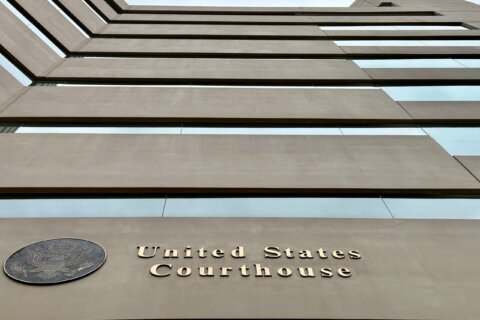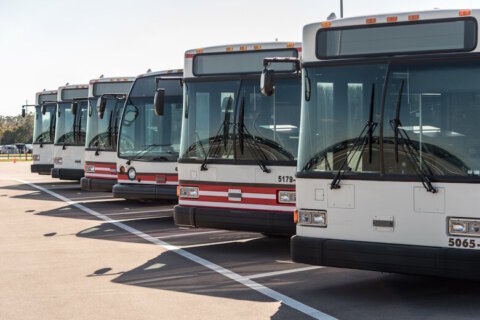This article was republished with permission from WTOP’s news partners at Maryland Matters. Sign up for Maryland Matters’ free email subscription today.
This content was republished with permission from WTOP’s news partners at Maryland Matters. Sign up for Maryland Matters’ free email subscription today.
Gov. Lawrence J. Hogan Jr. (R) submitted a supplemental budget to the legislature on Tuesday that directs $139.9 million for programs outlined in the state’s multi-year education reform plan that advocates and lawmakers had argued was missing from the governor’s initial budget.
The allocation is part of a larger supplemental appropriation of $480 million announced Tuesday. That proposal also includes $230.7 million for Medicaid programs, $1.2 million for retention and recruiting bonuses for the beleaguered Office of the Chief Medical Examiner, and $50 million for a Rural Maryland Economic Development Program that Hogan announced last week.
“With this supplemental budget, we are providing critical resources to support Marylanders’ top priorities,” Hogan said in a statement. “We look forward to working with the General Assembly in the coming weeks to secure a final budget that delivers record investments in education, major tax relief for families and retirees, and more support for police and first responders.”
After Hogan unveiled his spending plan for fiscal year 2023 last month, the Department of Legislative Services analysts concluded that the spending plan did not include $139.7 million for specific programs stipulated in the Blueprint for Maryland’s Future education reform plan. The largest chunk of disputed funding was $125.5 million specifically intended for the Baltimore City and Prince George’s County school systems.
The funding, called the “education effort adjustment,” is meant to provide extra money to local jurisdictions unable to raise enough taxes to fund their local shares of education reform costs. Legislative analysts say that the adjustment should amount to $99 million for the city of Baltimore and $26.5 million for Prince George’s County in the next fiscal year.
The governor’s office previously said that the state was not provided with the necessary data to calculate the education effort adjustment for the upcoming fiscal year.
The other unfunded Blueprint programs included training for teachers, curriculum support and expert review teams, which will visit schools and analyze the extent to which the Blueprint is being implemented.
In a letter to the governor, Senate President Bill Ferguson (D-Baltimore) and House Speaker Adrienne Jones (D-Baltimore County) last week, Isiah Leggett, the chair of the Blueprint’s Accountability and Implementation Board, wrote that the board believes the legislative intent was to fund the education effort adjustment starting in fiscal year 2023.
Soon after Hogan’s announcement, Sen. Cory McCray (D-Baltimore City), chair of Baltimore’s Senate delegation, called the move “a profoundly restorative step in the right direction” and thanked advocates who pushed for Blueprint programs to be fully funded.
“The onus was on the Governor to put the money where it would count — into the districts that need it most. By taking measures to correct prior missteps, Governor Hogan has chosen to contribute to the triumph of Baltimore City and its pupils,” McCray said in a statement.
Strong Schools Maryland, an advocacy group that was a part of the coalition that pushed Hogan to fully fund education reform programs, underscored that the goal of the reform effort is to create a world-class public education system in Maryland. “Fully funding the law is the first step to creating that system, and it seems the Governor has finally agreed to allow that to happen,” the organization’s executive director, Shamoyia Gardiner, said in a statement.
Cheryl Bost, the president of the Maryland State Education Association, said she was glad to see Hogan “restoring the funding.” “We need a governor who is not going to do cuts first and then restoration — we’d like to see a governor who adds on to that budget.”
Other programs included in the supplemental budget introduced Tuesday include:
- $21 million to support emergency medical service workers;
- $176.5 million in new federal funding to support housing initiatives such as the Homeowner Assistance Fund;
- $800,000 for midge spraying in Baltimore County; and
- $303,000 to support recruitment and retention of veterans’ cemetery workers.







